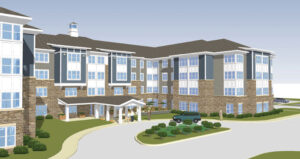The commercial real estate market remains strong, despite talk of an approaching recession, according to an Emerging Trends in Real Estate 2020 report produced by the Urban Land Institute (ULI) and consulting firm PwC and released at this week’s ULI fall meeting.
“Real estate is in a very good space,” said Mitch Roschelle, partner and business development leader with PwC, at the event. “The real estate community caused two recessions: it caused it in housing, and it caused it in the savings and loan crisis. This go-around, whatever happens, it ain’t going to be [real estate’s] fault.”
U.S. commercial real estate remains a favored asset class due to volatility in the global financial markets and global geopolitical instability, driving investors toward safety of U.S. properties.
The industrial sector continues to be ranked highest for investment and development prospects, reflecting the impact of e-commerce growth and rising demand for storage and delivery facilities. Total industrial investment volume reached a new peak of $97 billion in 2018, according to research firm Real Capital Analytics (RCA). The combination of several large entity-level transactions announced year-to-date and continued strong returns should combine to drive another robust year of sales activity in 2019. A positive outlook for values continues to attract new institutional sources of capital to logistics real estate and is pushing pricing higher.
“I’ll just say simply the growth trajectory of e-commerce is still pretty steep and e-commerce uses warehouses,” says Roschelle. “Several years ago, warehouses were a national ubiquitous trend, but now, I think it becomes very local.”
Multifamily and single-family housing also continue to be favored asset classes, as housing needs continue to change for millennials and baby boomers. Less favorable asset types, according to the report, include office, hotel, and retail.
According to ULI and PwC, the highest-ranked markets for investment and development prospects are those with “interesting, lively places with ample employment opportunities and good quality of life, even as housing affordability challenges intensify.” For this reason, just as the live-work-play environment revived inner cities a quarter-century ago, it could also do the same to certain suburbs. The report referred to this trend as “Hipsturbia.” For example, around Atlanta, communities such as Decatur and Alpharetta are already vying for migrating millennials, as this younger generation begins to move out to the suburbs to avoid pricey urban housing. In addition, as more and more markets have reached a breaking point when it comes to affordable housing, employers are discouraged from locating in areas with inadequate affordable housing.
Austin ranked as number one out of 80 U.S. cities for overall real estate prospects for 2020, followed by Raleigh, N.C., Nashville, Tenn., Charlotte, N.C. and Boston.
Moving away from classifying cities as primary, secondary or tertiary, ULI added new market categories this year to reflect the appeal of certain metro areas. These include:
- Major capital magnets—Manhattan, Chicago, Inland Empire, Calif., Northern New Jersey, Houston, Phoenix, San Diego, Oakland/East Bay, Calif. These markets accounted for more than 17 percent of total U.S. transactions over the past three years.
- Stalwarts, surprises and determined competitors—Philadelphia, Long Island, N.Y., Fairfield County, Conn., Queens, Bronx and Staten Island, N.Y., Minneapolis/St. Paul, Sacramento, Calif., Kansas City, Las Vegas, Baltimore, District of Columbia, and Detroit. All have a credible track record of capital inflows and recent evidence of solid transaction volume.
- Treasures ripe for discovery—Jacksonville, Fla., Salt Lake City, Columbus, Cincinnati, Louisville, K.Y., Pittsburgh, Greenville, S.C., Oklahoma City, Cape Coral/Fort Myers/Naples, Fla., Boise, Id., Spokane, Wash., Des Moines, Iowa, Tacoma, Wash., and Jersey City, N.J. All have populations exceeding 1 million (the litmus test for some national investors) and double-digit growth rates.
- Markets aligning with expectations—Fort Lauderdale, Tallahassee, Daytona Beach and Gainesville, Fla., Richmond, Va., Birmingham, Ala., Honolulu, Cleveland, Albuquerque, New Mexico, Omaha, Neb., Tucson, San Antonio and Buffalo, N.Y. These are markets in which prospects most closely match recent investment flows.
- Thrifty choices and boutique markets—St. Louis, Memphis, Tenn., New Orleans, Providence, R.I., Hartford, Conn., Virginia Beach/Norfolk, Milwaukee, Madison, Wis., Knoxville and Chattanooga, Tenn., and Portland, Maine. These are markets with weaknesses that earn them relatively low rankings, but that can still offer selective opportunities for those willing to look for potential.
Sebastian Obando | Sep 20, 2019





